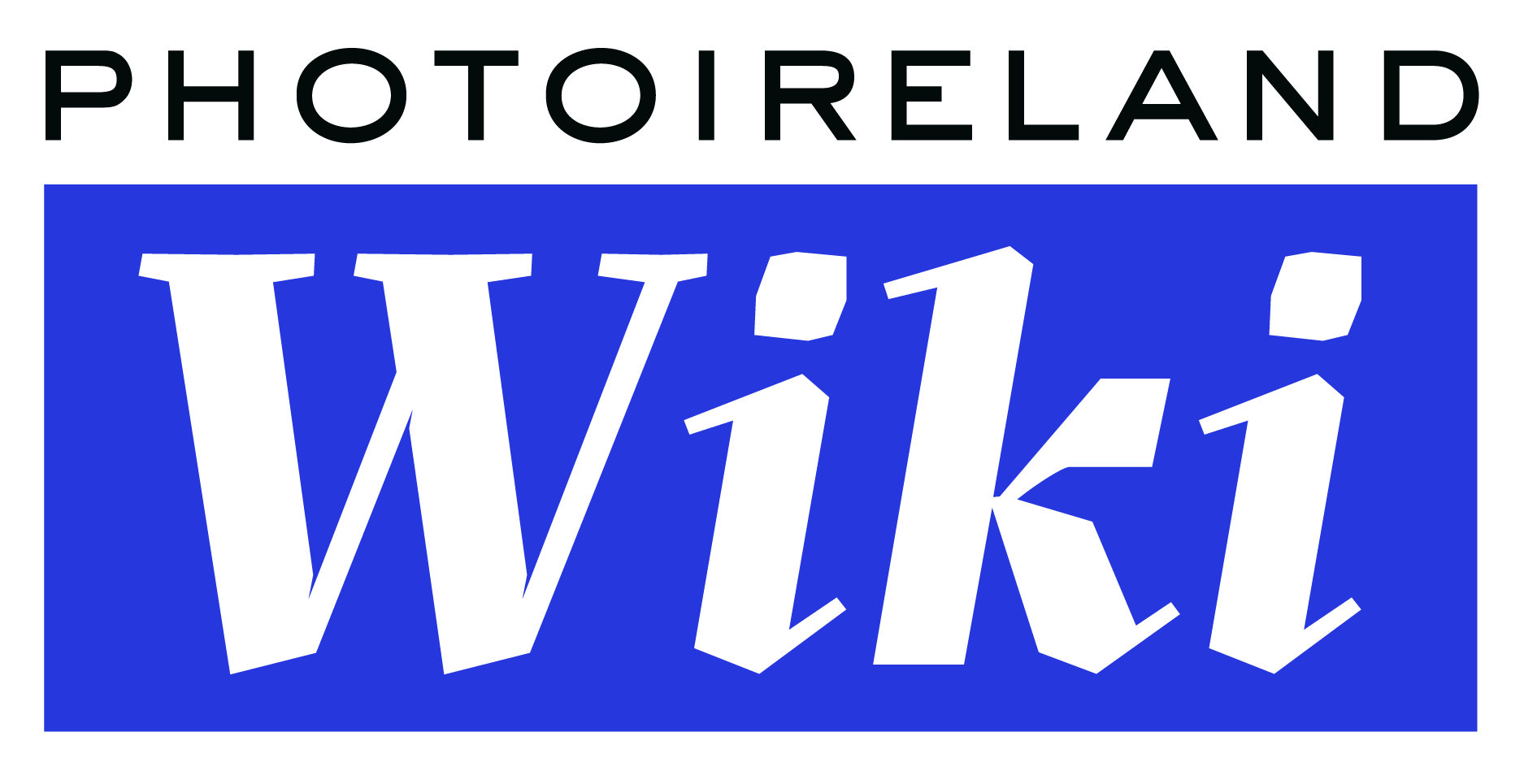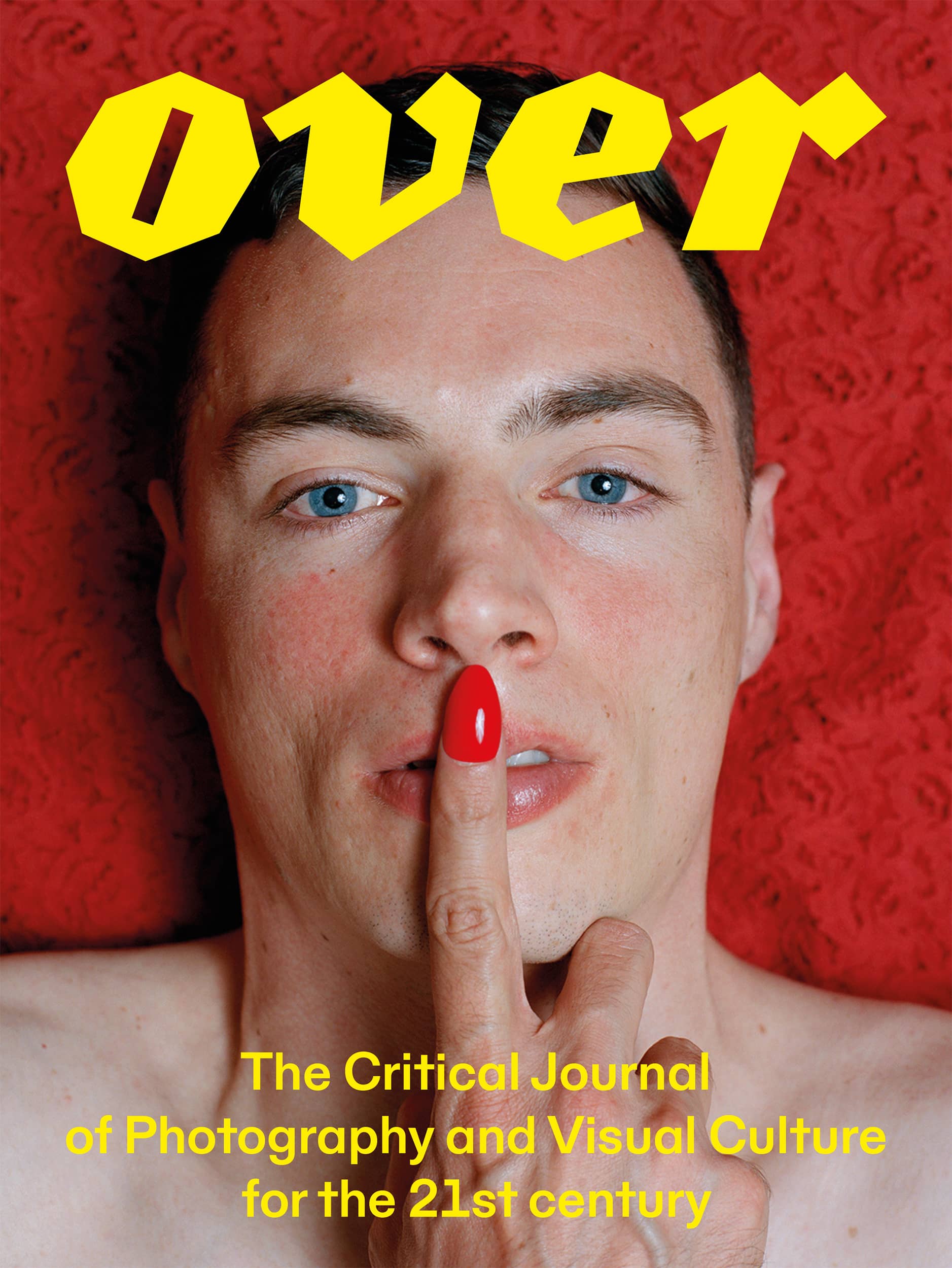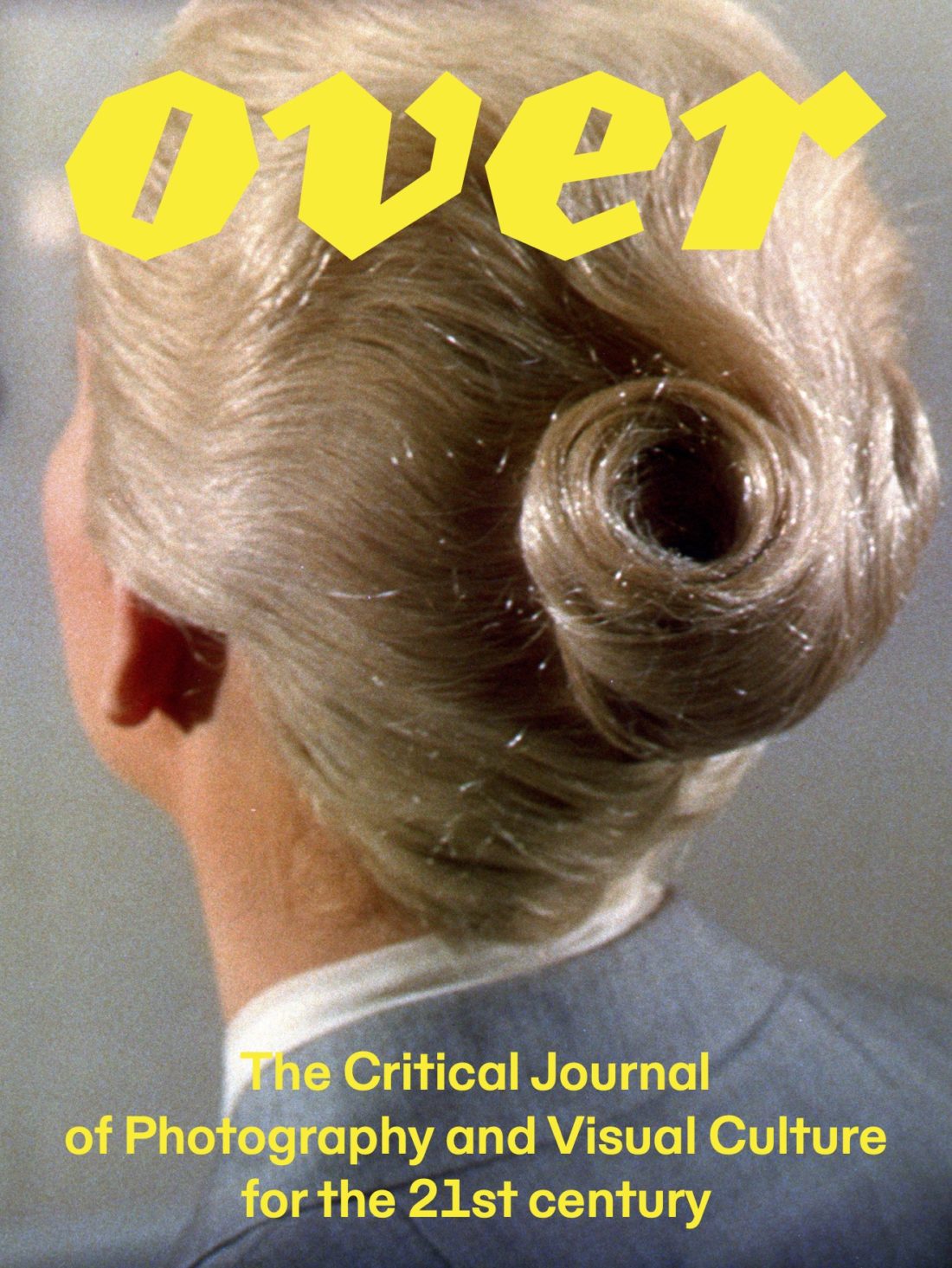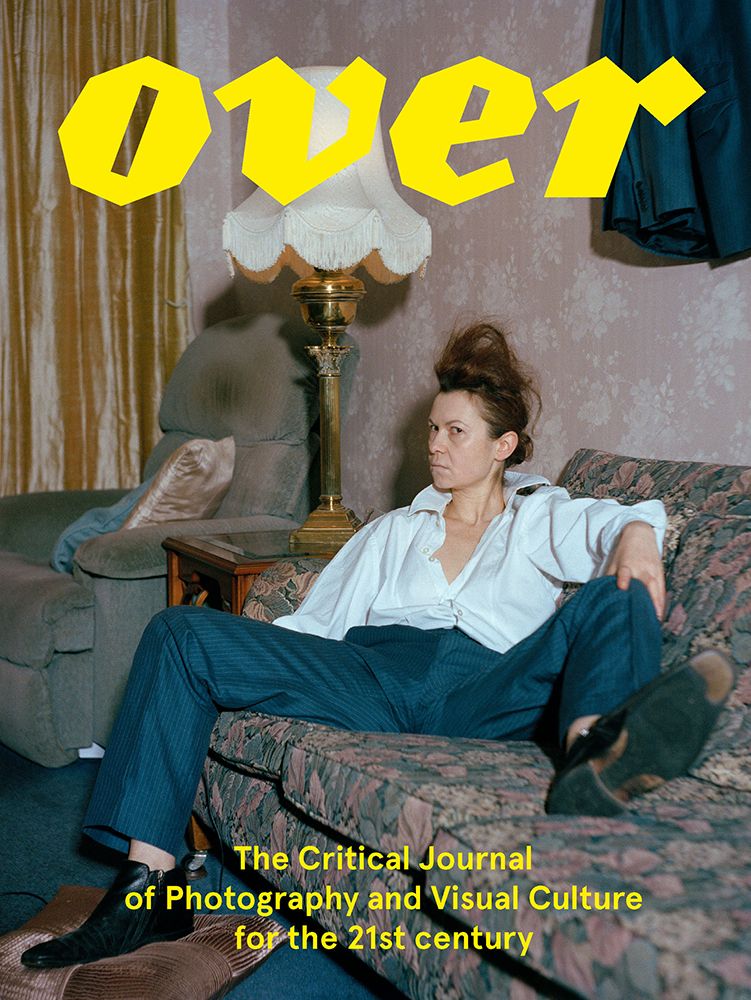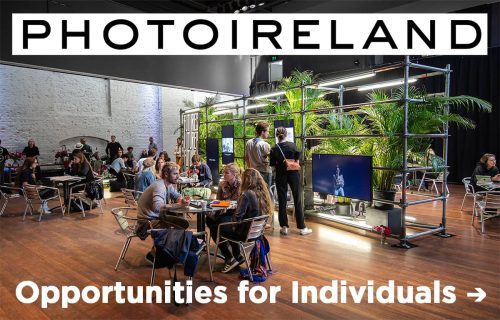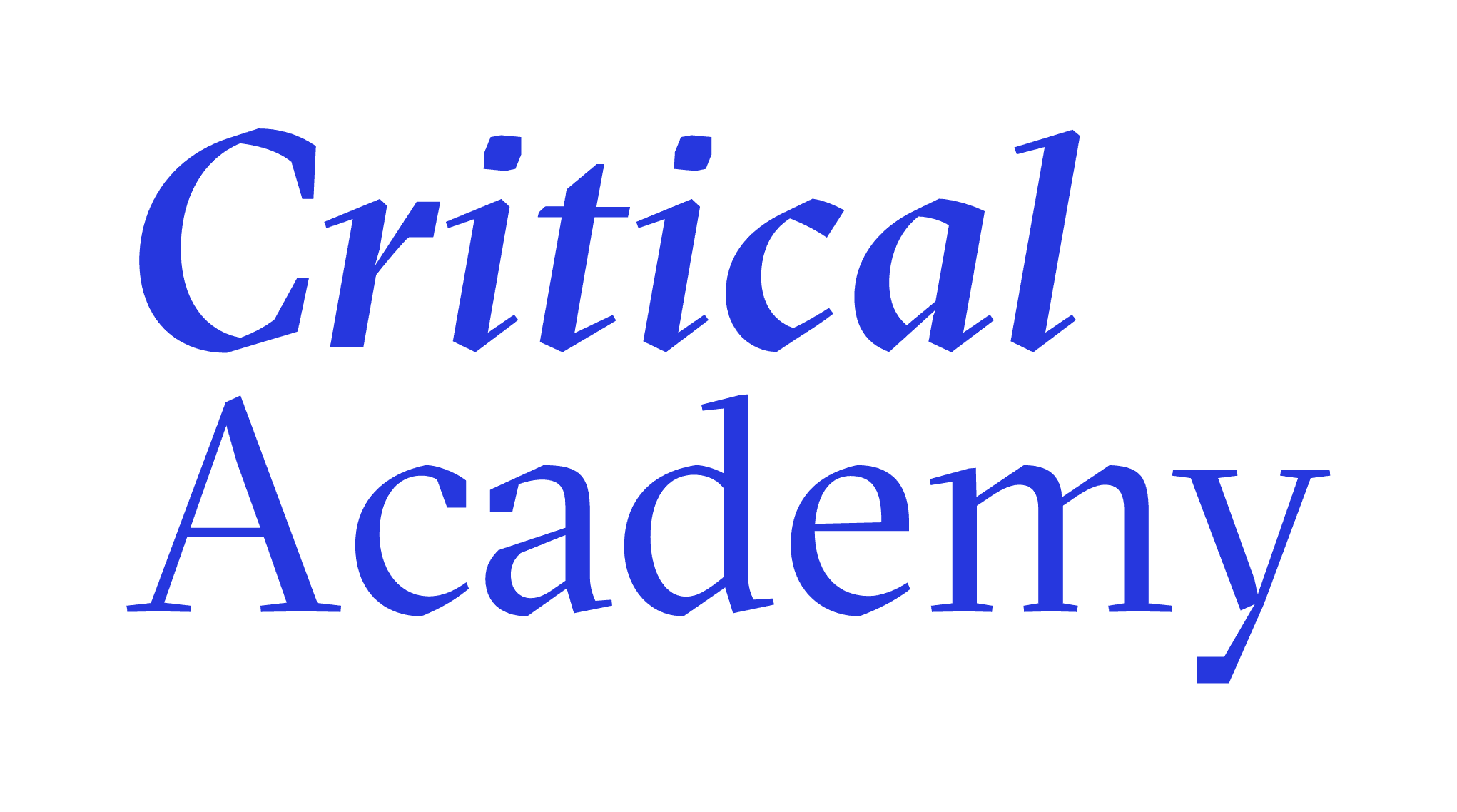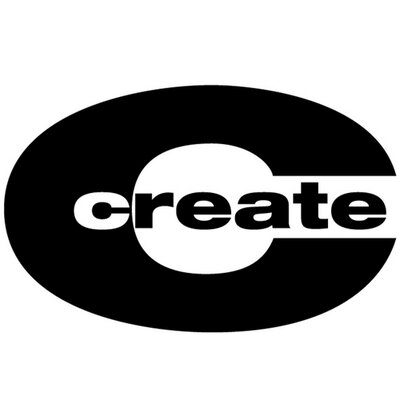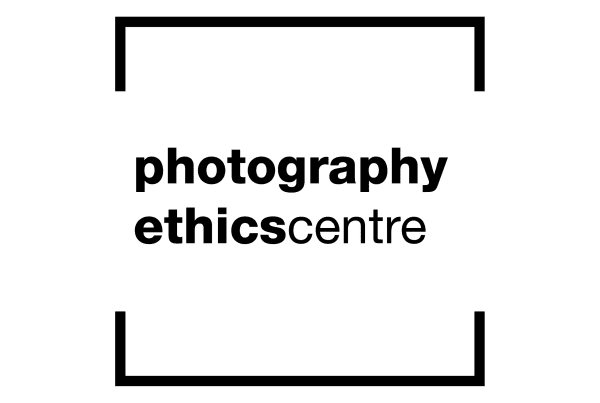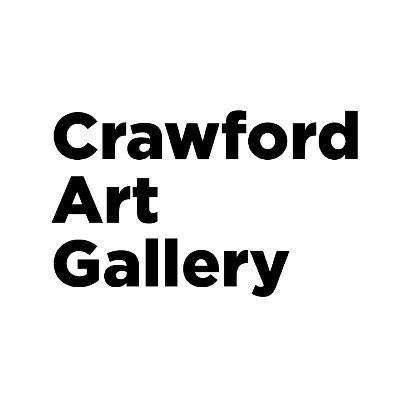

Crawford Art Gallery
Founded Year
Location Emmet Place, Cork, Ireland T12 TNE6
Website crawfordartgallery.ie
Crawford Art Gallery is a National Cultural Institution, dedicated to the visual arts, both historic and contemporary. The collection comprises over 3,000 works, ranging from eighteenth-century Irish and European painting and sculpture, through to contemporary video installations. At the heart of the collection is a collection of Greek and Roman sculpture casts, brought to Cork in 1818 from the Vatican Museum in Rome.
1History
The Crawford Gallery building is an important historic building, parts of which date back to the early eighteenth century. The building is comprised of three different building phases: The building which now houses the Crawford Art Gallery, erected in 1724, as Cork´s Custom House recalls the ties between commercial success and the development Cork city in the early eighteenth and nineteenth century. In 1830 the old Custom House building was given to the Royal Cork Institution, (a forerunner of the present University College Cork) with the object of ‘diffusing knowledge and the application of science to the common purposes in life.´
A new house was built at this time to accommodate the rapidly expanding port operations. The building became a Government School of Design in 1850 and part of the South Kensington School system some years later.
A magnificent extension, housing studios and galleries, was added in 1884 to accommodate the growing number of students, at the expense of William Horatio Crawford, after whom it was named the Crawford School of Art. The conversion of the building into a School of Art and Gallery in the early nineteenth century was the first step to the establishment of art collection. When the School of Art relocated to its current premises in 1979, the building became the home for the Crawford Art Gallery.
In 2000, the Crawford Gallery further expanded its gallery space by creating a new exhibition wing of contemporary art designed by Dutch architect Erick van Egeraat and funded by the Department of Arts and Heritage. This new expansion has created 1000 square meters of additional exhibition space with which the Gallery has been able to present a broader, more contemporary spectrum of work to visitors.
The Crawford Art Gallery´s art collection was formed in 1819, when a set of Graeco-Roman and Neo-Classical sculpture casts were presented to the Cork Society of Arts. This collection was quickly augmented with works by students and teachers of the Cork School of Art, formed that same year: the students included Samuel Forde, Daniel Maclise and John Hogan. In 1825, the collection was moved to its present building, the former Custom House of Cork. The old Custom House provided a home for the Royal Cork Institution, the body that had taken over responsibility for the art collection, between 1825 and 1849. With the founding of a university in Cork, responsibility for the art collection was transferred to the Cork Government School of Design, established in 1850, that continued to occupy the old Custom House. In 1884, a new extension was added to the building, providing purpose-built galleries for exhibiting paintings and sculptures. Renamed the Crawford School of Art, the art collection, used also as an adjunct to the teaching of art, continued to grow, under the stewardship of the Technical Instruction Committee.
The collection was augmented with the purchase of works by Irish artists, many of them staff or graduates of the Cork School of Art. This pattern continued through the twentieth century, although there were several developments, notably the bequest of funds for the purchase of works for the collection by Joseph Stafford Gibson in 1919. This fund was used through the mid-20th century to acquire a sizeable collection of mainly academic paintings.
In 1930, the Technical Instruction Committee was replaced by the Vocational Education Committee, and the City of Cork VEC continued through the twentieth century as owners and managers of the building. The Arts Council introduced a joint-purchase scheme in the late 1960s, under which a number of mainly contemporary works were purchased by the Gallery. The Friends of the Crawford Art Gallery have supported acquisitions for the permanent collection over two decades. Private donations of works, such as the Seamus Murphy sculpture collection, will continue to form an important part of the Gallery´s acquisition strategy in the future, although such acquisitions need to be guided by this policy document.
In 2006, a new company was established by the Minister of Arts, Sport and Tourism to manage the Gallery, and the Gallery designated a National Cultural Institution. The School of Art had long since moved (in 1979) to a different building, and in 2007 the administrative offices of the City of Cork VEC were also transferred to new premises nearby. The Department of Arts, Heritage and the Gaeltacht now provides an annual grant in aid that enables the purchase of a small number of significant works, both of historic and contemporary art. The legislation Section 1003 of the Finance Act, through providing income tax relief on works donated to the Crawford and other National Cultural Institutions, has become an important avenue for acquisitions to the permanent collection.
The permanent collection of the Crawford Art Gallery has grown steadily in recent years. It is strongest in 20th century and contemporary Irish art. In 1990 the collection numbered some 1500 paintings sculptures, prints and other works of art. These works were listed in the Illustrated Summary Catalogue, published in 1992. Since that date, over 3,000 new works have been added to the collection, which now contains almost 4,000 items.
Crawford Family
The Crawford family, brewers and merchants were responsible for many improvements in Cork during the nineteenth century, although today the family name lives on in Cork only in the names of streets and those institutions they helped found. The present day Cork brewing firm of Beamish & Crawford has long since passed out of family ownership. The Crawford’s would have been such a family as described by De Latocnaye, who visited Cork in 1796, dubbing it laconically, if rather uncharitably, ‘the City of Yawns’:
‘this town is one of the richest and most commercial of Europe. The principal merchants are nearly all foreigners, Scotch for the most part, and in the short period of ten years are able sometimes to make large fortunes’
The Crawford family were Scottish, claiming their origins at Baidland, near Dalry in Ayrshire. A branch of the family were probably in Ireland as early as 1618. In 1625 it is recorded that Andrew Crawford, miller, was in possession, as tenant of Lord Clandeboye, of a manorial mill and lands in Co. Down. These lands were subsequently purchased by William Crawford from Lord Clanbrassil in 1670 and became known as the Crawfordburn estate. This estate continued in family ownership for 277 years, until 1947, when it was sold by the grandson of the last owner, Col. Robt. G. Sharman Crawford (d.1934). Branches of the family spread around the world to Vancouver, New Orleans and Melbourne; there was even a German branch of the family.
William Crawford I of Crawfordsburn had two sons, John and James. John had a daughter named Mabel, who married A. A. Willliam Sharman (thence the name Sharman Crawford). James Crawford had seven children, one of whom, William, came to Cork in 1792, founded the brewing firm along with William Beamish; and built the house ‘Lakelands’ near Blackrock. The Beamish and Crawford brewery was successful from the outset. Managers were brought over from London who were conversant with the latest technological developments in brewing, and the company quickly became the largest brewer in the country, employing nearly five hundred people in 1807. By 1834, one-eighth of the city’s rates were being paid by this one company.
William Crawford II married, firstly, Elizabeth Cooke and after, Mary Uniacke. They had many children, including William Crawford ‘the Younger’, who married Dulcibella Morris of Dunkathel House in 1813, and died in 1840. John Hogan sculpted the monumental portrait of William the Younger in 1844, which stands in the Crawford Art Gallery today. It bears the Cork coat of arms on the base and an inscription praising William and his love for his native city – ‘His heart throbbed for her prosperity’. Although William the Younger had been a founder of the original school of art in Cork, it was his son William Horatio (1812-1888), who was to become the great benefactor of the construction of the magnificent building which stands today as the Crawford Art Gallery. William Horatio Crawford spent much of his life working in the family firm, which he took over along with Richard Pigot Beamish at the end of the 1850s. He died unmarried on October 16 1888.
One of the last descendants of this branch of the family, Hugh Crawford, an architect with a practice in England, visited Cork on several occasions in the 1980s. Hugh Crawford compiled the family history on which the above account is partly based, also donating to the Gallery in 1987 a collection of portrait miniatures of the Crawford family. His account of the old family house is interesting:
‘William Crawford Sr. must have been something of a Nabob in the 18th century manner, as near the house he had his own quay with a small warehouse. What he imported is uncertain, but he was said to have had interests in the West Indies. Possibly molasses were imported for the brewery, or perhaps only hops and barley. William had advanced and original ideas in the running of an estate; and probably also the brewery. It seems that he had a favourite red Magnolia tree (perhaps Camelia) and he had devised a system for bringing liquid manure from an adjoining yard (as the tree was planted against the wall) to fertilise the roots; he had also built a shelter around the trees with a seat where he would often sit looking out over the beautiful view. It is said that it was on this seat that he died. However, it is doubtful whether this story was about him or his son, perhaps the latter as the story is still remembered.’
William Horatio Crawford, and his contemporaries Richard Beamish and William Edward Gumbleton were eminent gardeners. Both Crawford and Gumbleton were bachelors and collected fine books, works of art and rare plants. Crawford, a reserved and dignified man, was described as of ‘an ascetic temperament’. He was especially keen on growing tender shrubs and trees in greenhouses, and had at Lakelands a ‘perfect arboretum…richly planted…with rare shrubs and trees’. Crawford’s plantings included Himalayan and Andean specimens, such as magnolias, rhododendrons and cordylins. The Himalyan Magnolia campbelli was in Crawford’s collection and flowered for the first time in the British Isles. Crawford was probably best known for this Brownea species, from which he produced several hybrids, some of which he bequeathed to the National Botanical Gardens in Dublin. This genus is native to the West Indies and cannot be cultivated outside in Britain or Ireland. In 1876, these plants grew to such a height in Crawford’s greenhouses, that he had to raise the roof. Margaret Hill, of the well-known family of Cork architects, who studied at the Cork School of Art from 1857 to 1861, painted some of these plants for gardening magazines.
William Horatio had inherited Lakelands, an old house ‘richly stored with rare books, paintings and engravings’ from his father. Hugh Crawford recalls its end:
‘The end of Lakelands was sad. Under circumstances no longer known, the property passed into the possession of a solicitor, possibly as a bad debt. The house was demolished by the new owner as he had ideas of turning the property into a race-course but was refused permission to do so. Until recently the property was owned by a farmer, who supplied some of the facts I have recorded. I believe that at least part of the site has now been built over. When the house was demolished extensive cellars were left closed up. Local people say that one contained a large collection of papers and documents which were allowed to be destroyed or dispersed, also a collection of fine wine. It was popularly believed that there was still one cellar which had never been opened. A few years ago investigations were made, but nothing was found.’
Today, the site at Lakelands is a field surrounded by suburban housing, overlooking Cork Harbour. Little remains of the house or its outbuildings apart from a vast stone-walled yard with a classical arched and pedimented gateway, bearing the date 1812. In the field, a group of gigantic monkey puzzle trees marks the site of the house itself, of which nothing remains other than some remnants of the cellars.Hugh Crawford died, sadly, in March 1989. The Crawford family is now extinct in Cork, since John Crawford, of London has passed away in 2007.
Architecture
The identity of the architect responsible for the Custom House of 1724 remains uncertain. Its design has been locally attributed to Sir Edward Lovett Pearce, however, it would be wise to heed Maurice Carig’s advice ‘to remain on guard against the temptation to attribute every Pearcean-looking building out of 1730 to the master himself’. The building is less robustly classical than Pearce’s other known designs, for example Bellamont, Castletown, or Cashel Palace, – and the distinguishing feature of these houses- a distinctively Classical treatment of the roofline – is almost entirely absent from the Cork building, where there is no attempt to hide the steep slated roof. (Although it should be noted that in Charles Smiths description of the building in 1750, he mentions a ‘cornice and balustrade at top’; however there is no signs of balustrade in the mid-nineteenth century drawing of the building by the architect Henry Hill). The architect of the Custom House could certainly produce work which was elegant enough, but his style was more formally rooted in an Anglo-Dutch red-brick tradition than in the high Palladian classicism of Pearce.
It is far more constructive to look to other early eighteenth-century houses in the Cork area for clues as to the architect of the Custom House; and in the seaport of Youghal, less than thirty miles from Cork city, a large house in the main street known as the ‘Red House’ provides solid grounds for comparison with the Cork building. The Red House, probably so-called because brick buildings were comparatively rare in Munster up to the eighteenth century, was built by the Uniacke family in 1710. It has been traditionally ascribed to the Dutch architect and builder Leuventhen, and the design for the townhouse in Youghal contains key features which also appear on the Cork Custom House, such as the distinctive string course at first floor level, a gentle breakfront facade, quoins and window surrounds of carved limestone, and a lunette over the entrance doorway.
There is also in Youghal the famous clock gate straddling the main street, which although it bears the date 1771, was apparently modelled closely on an earlier structure. Craig mentions Coltsman as a possible architect for the clock gate, and compares it with the similar St.Ann’s, the clock gate and the custom house are quite dumpy in appearance, and in spite of the classicising features of both buildings, they, and the Red House, share a homely feeling, and could possibly have originated from the same journeyman-builder’s portfolio of designs.
In its original form, the Cork Custom House was three storeys high and seven bays wide on both its main fronts. The northern facade, looking on to the River Lee, has a centre breakfront of three bays, while the eastern facade, wider and more ornate, has its five bays recessed, the centremost bay being flanked by engaged columns. Doric at ground level, Ionioc above, rising two storeys and surmounted by carved pineapples and a lunette. The pineapple motif was widely used as a symbol of hospitality in eighteenth-century European and American architecture, but it is particularly linked with Newport, Rhode Island, a seaport which prospered on the West Indian trade. Stone pineapples are found on several buildings n Cork dating from this period, and hint also at the close trading links which existed between Cork and the West Indies. The pineapples are carved of a particularly white limestone that is native to Cork. The engaged columns and lunette are also of this stone, as are the quoins and window surrounds. This contrasts pleasently with the red-brick facing of the building – although it should be noted that the entire building was refaced with new bricks when the 1884 extension was constructed, so that the old and new parts would match more closely. The centremost bay of this eastern facade, flanked by columns and other embellishments, appears to have been the original main entrance to the Custom House; however a window has been inserted at this point, again during the 1884 renovations.
The building was the Custom House for the prosperous port of Cork until the beginning of the nineteenth-century traces of its original function remain: the large Gallery at first-floor level where the permanent collection now hangs was originally the ‘Long Room’ of the Custom House. This room would have been occupied by scriveners and clerks seated at long tables bearing ledger, where bills of lading would be prepared for ships sailing to and from Cork.
The earliest known description of the custom house appears in the book Voyages en Anglois et en Francois d’A. de la Motraye, en divers-es provinces…, published in 1732. Mortraye talks of the building and says it is ‘the Handsomest of the public Edifaces & built after the Italian Manner’. some twenty years later, Charles Smith included a description of the building in his account of Cork:
“The Custom House is a large elegant building, of one main structure, and two returns; it consists of three stories; the angles, door-case, and window-frames, are of hewn stone, as is the cornice and balustrade at top; the other part of the building is of brick. In this house, are several offices of the management of the affairs of the excise and customs of this port; together with an elegant apartment, and all proper conveniences for the collector, who resides in the house. On either side of the building are the store-houses, which form two handsome piazzas. Here is a good quay, furnished with cranes and other conveniences for the discharging of goods; and a new canal made almost quite around the Custome-house, so that several vessels may lie there at a time.”
In the year 1724, the old Custom-house being too small, was taken down, and this elegant building was then begun to be erected, at the King’s expense, which was finished the following year. there is a house standing in the Main-street, S. of the exchange, which was formerly used as a Custom-house; and on it, are the arms of England, with a ship, cut in stone, near the roof”.
18th century Cork
The architectural character of Cork changed considerably during the course of the nineteenth century, and so few buildings from the eighteenth century survive in anything like their original condition. The considerable wealth generated through the export of agricultural produce resulted in the construction of a number of great houses in the Cork area and the almost complete transformation of the city centre. The attractive Dutch character of Cork’s narrow streets and quays effectively disappeared and was replaced by the more severe and self-consciously character of new banks, post offices and a new Neo-classical custom house, constructed in 1814.
Visual representations of the Old Custom House are rare. In the latter half of the eithteenth century, John Butts, a talented local genre and landscape artist, painted a large panoramic view of Cork city, as seen from an elevated position to the north of the river. The cityscape depicted in the painting is actually an amalgamation of two separtated viewpoints and it is a measure of Grogan’s talent as a landscape painter that he had managed to weld them together in a convincing way. The 1724 Custom House appears almost in the centre of the painting, surrounded by sailing vessels, as described by Charles Smith in his account of 1730, (quoted in ‘The Architect of the Old Custom House’ ). One of the two ‘handsome piazzas’ described by Smith can be seen in front of the Custom House, the attractive facade of Richard Sainthill’s Queen Anne house can be discerned above the masts of the ships. This house, and the Custom House, are the only two quayside buildings depicted in the painting which survive to the present day.
Grogan’s painting conveys well the distinctvie Dutch character of the city at that time. Red-brick houses line the quays, their ornate gable fronts facing the river. The painting shows the old custom house facing onto the large enclosed quay, or piazza, where tradition has it, contraband tobacco was burned by customs officers. That piazza became in the nineteenth century the site of a concert hall called the Athenaeum, built in the mid-nineteeth century. The Athenaeum was an elegant colonnaded building of considerable charm. The later became known as the Theatre Royal or ‘the Opera House’.
The wide channel beside the Custom House, refered to by Smith as a ‘canal’, was known then as King’s Quay. As Croker described, it was arched over during the nineteenth century and renamed Nelson Place. It is now known as Emmet Place. The Journal of the Cork Historical and Archaelogical Society in 1892 contains a note by R. Day which mentions the filling-in of the quay. The note itself probably dates from an earlier part of the nineteenth century, as it refers to the Royal Cork Institution, which occupied the Custom House from 1832 to 1850:
‘The present Library of the Royal Cork Institution was the long room of the Old Custom House, and the foundation stones of the wall separating the yard from Nelson Place was a dock, prior to the building of Patrick’s Bridge’
Eighteenth-century maps of Cork show a bowling green just to the south of the Custom House. Bowling was a popular sport at the time (it is interesting to note that in 1723 the bowling green beside the custom house of New York city became that city’s first pubic park). The names of laneways around thre present-day Crawford Gallery evoke the period: Bowling Green Alley, Drawbridge Street, Half-moon Street and French Church Street – named after French Huguenots who settled in Cork following the Revocation of the Edict of Nantes in 1685.
Lavitt’ Quay, opposite the Custom House, was named after Joseph Lavitt (or Lavitte), a Huguenot merchant who came to Cork in 1690 and made a fortune refining sugar and supplying spirits to the Williamite army in Ireland. Richard Sainthill recalled how Lavitt was so unashamed of this source of wealth that he had a small gilded key suspended by silver chains from the richly stuccoed ceiling of his dining room. However, Lavit’s business concerns were not restricted to sugar and whiskey; he started Cork’s first paper mill at Glanmire and was responsible for the reclamation and development of the quay which bears his name – the presently-named Lavitt’s Quay is a little further upstream. Downstream was Seven Ovens Quay, named after its Dutch owner Theodore Vansenhoven. Amsterdam’s Meer Dyke reappeared in Cork as the Mardyke riverside walk, yet another reflection of the strong Dutch influence in Cork at that time, and it is not surprising that the closest parallels for Grogan’s own style of painting are also to be found in Holland. These influences on Cork’s art and architecture stemmed from the close mercantile contacts which existed between Amsterdam and Cork in the eighteenth century.
As the size of cargo ships increased, and new quays were constructed to accommodate them further down the river, the position of the Old Custom House became unsuitable. When a new Custom House was built after 1810, the old building fell into disuse for a considerable period. Several Cork philanthropic and educational bodies, such as the Royal Cork Institution and the Cork Mechanics Institute, applied to the government for the use of the building, but it was not until 1832 that the RCI was finally able to move its considerable library, scientific instruments and collection of sculpture casts into the old building. For the following two decades, the Old Custom House became the centre of art and science education in the city. However, with the founding of Queens College Cork in 1849, the RCI’s useful life was effectively brought to an end, and the Old Custom House that same year was re-opened as a Government School of Design, one of a large number of such schools which were established throughout England, Ireland, Scotland and Wales at this time. In 1884, a large extension was added to the School of Design, which was then renamed the Crawford School of Art. This extension, and the original Custom House, now form the Crawford Art Gallery.
The Gibson Bequest
On 3 February 1919, Joseph Stafford Gibson, a native of Kimurry in Co. Cork, died in Madrid, aged 82 years. Although from an old Munster family, Gibson had spent the best part of his life in Spain. He was an enthusiastic amateur artist and produced a considerable number of watercolours depicting Spanish landscapes and towns. On his occasional return visits to Cork, Gibson would seek advice and encouragement from James Brenan, headmaster at the School of Art. As a mark of gratitude for this help, Gibson bequeathed his coin collection, some pieces of Spanish ceramic and silverware, and most importantly, the sum of £14,790, to the School of Art, ‘for the furthering of Art in the City of his boyhood’. To carry out the terms of the will, the ‘Gibson Bequest Committee’ was set up in 1922 with J.B. Giltinan as Secretary. (N.B.There are preserved in the Crawford Gallery today, minute books which detail some of the early meetings of the Gibson Bequest Committee, particularly for the years 1922 to 1926, and the following account is derived almost in its entirety from these handwritten records).
One of the first things the Gibson Bequest Committee had to consider was the display cabinet, which Joseph Stafford Gibson had requested be made, for the exhibition of his personal collection. At one of the initial meetings of the Gibson Committee, held on Saturday 11 November 1922. Daniel Corkery suggested that two inscriptions be placed in the cabinet, one in English and one in Irish, recording Joseph Stafford Gibson’s generosity. This was agreed, and James Archer was requested to carry out the engraving of the inscriptions, which still grace the Gibson display cabinet today. The chairman undertook to consult Dr Westropp of the National Museum as to the display of the coins in the case. It was agreed to purchase an etching of The Cork Quays by Griffin, as an old student of the School of Art, at a cost of £1. Is. 0d.
Another problem was how the bequest might be used to help students of the School of Art. It was decided to establish a travelling scholarship fund. The committee then discussed sending the first selected student, William Sheehan, to a ‘continental art centre’. George Atkinson, principal of the Metropolitan School in Dublin, commented that Sheehan was ‘the most talented young man in Ireland, with the exception of Keating’. It was decided to award Sheehan a scholarship for three months and send him to Paris. However, at the next meeting of the Gibson Committee, it was decided, ‘for important reasons’, that Sheehan should go to Madrid instead. Considerations other than artistic presumably dictated this change. Sheehan was to be given a subsistence allowance of £20 per month; he was to get third class travelling expense to Madrid – with saloon on steamers – and his tuition and canvases were to be paid for, ‘such expenses to be properly voucheed’. The scholarship student would have to be given some of his expenses in advance, as it was considered that ‘the Committee’s Paying Order would hardly be accepted in Madrid’. Sheehan himself was then called before the Gibson Committee and given sage advice on how he was to make the most of this golden opportunity which was being afforded him. George Atkinson had undertaken to provide introduction for Sheehan in Madrid, in order that he could visit various painters’ studios.
The Gibson Committee then considered the purchase of works for the Art Gallery. George Atkinson had provided them with a list of names of people who would make a good panel of consultants. These included the President of the Royal Hibernian Academy, the Director of the National Gallery of Ireland and the Headmaster of the Metropolitan School of Art. Atkinson put forward the office rather than the holder, for the sake continuity. These three would form the nucleus of a panel, the others to be appointed by the Committee, as required. Atkinson had also prepared a list of Irish artists, and ‘starred’ them in order of his opinion of their importance, but he added that if the Gibson Bequest Committee got ‘a good Hone or Osbourne’ for their impending purchase they would be doing well. The Bequest Committee did not like the idea of office holders being appointed, but as their own submitted list included Dermod O’Brien PRHA, Langton Douglas (Director of the National Gallery of Ireland) and George Atkinson himself, their objections were theoretical for the present. These three men were to act as expert consultants with Daniel Corkery and Hugh Charde, Second Master at the Crawford School of Art.
On Saturday 3 February 1923, the purchase of paintings for the Art Gallery was discussed, but J.J. O’Connor said that he was awaiting a copy of the regulations governing the Chantrey Bequest at the Tate Gallery, so little could be done for the present. The disposition of the souvenirs, books and art collection of Gibson was discussed, and it was decided that his watercolours should be bound in leather folders, to be designed by ‘Miss Scott’ of the School of Art; his collection of engravings was also to go to the School, while his collection of drawings of butterflies could be used by the Design classes. Some of Gibson’s books went to the School library, others were given to the ‘free library’. His small vice was to be given to the enamelling class, and his telescope and opera glasses to the life drawing class, and his small hatchet to the School of Art attendant.
On May 5, 1923, it was reported that William Sheehan had set off for Spain, leaving Cork on April 4 and arriving in Madrid on May 10. Almost immediately, the young scholarship student was in debt, to the tune of 12 pesetas for a telegram to the Secretary of the Bequest Committee. He reported that he was studying at the Academia de Bellas Artes in Madrid. Sheehan received a weekly allowance of £6, or 150 pesetas. His hotel bill for the first nine days was 218 pesetas, which was more than his entire allowance for that period, but his transferring to a pension lowered that expense. Even after receiving a letter from a H.A.K. Boyd on Sheehan’s behalf, saying that his allowance was insufficient, the Bequest Committee refused to raise it, although they did forward his £5 to cover his debts. By June 2, Senor Bley of the Academia had still not replied to a letter enquiring as to Sheehan’s performance, but it was agreed nonetheless to extend his scholarship beyond the probationary period. However, on June 15, a special meeting of the Bequest Committee was called, after reports that Sheehan had been using his letters of introduction to important people in Madrid (given him by Atkinson) to ‘cadge for money, whilst under the influence of drink, on the ground that the Gibson Bequest Committee does not allow him sufficient to live on’. Councillor Ellis moved that ‘in view of Mr William Sheehan’s failure to realise and make proper use of the opportunity which had been afforded him to ensure his artistic career’, the scholarship should be terminated. The motion was unopposed.
Not long after, in unknown circumstances, William Sheehan died, and on October 20 1923, the Committee proposed a vote of sympathy to his relatives. A year later, in accordance with the terms of the Gibson Bequest, an exhibition of the paintings which Sheehan had executed while in Madrid was mounted in the Art Gallery, for fifteen days. The Bequest Committee decided not to press any claim of ownership of these works, but instead presented them to Sheehan’s mother, with a request that she might consider presenting one (a painting from the nude) for inclusion in the Gibson collection.
The Bequest Committee turned their attention to the purchase of paintings for the Gallery. On December 1, 1923, Atkinson, Corkery and Charde recommended the purchase of In Capel Street by Jack B. Yeats, a Sketch in Oils by Daniel A. Vere Smith, and the modelled head An Stracaire Fir by Joseph Higgins. Atkinson had visited the studio of Jack B. Yeats himself, and recommended that the Committee purchase Off the Donegal Coast and a smaller canvas, A Quayside Worker.
All the above, with the exception of the last, were purchased by the Committee. Atkinson further recommeded Sean Keating’s Men of the South as ‘a good work; almost great work’; he was supported in this recommendation by Dermod O’Brien. Some weeks later, on December 15, the Committee agreed on a set of regulations governing the purchase of works for the Art Gallery.
As well as original works in oils, watercolours, pastels, ink, silverpoint and crayons, the Committee would consider sculptures (although only plaster works in exceptional circumstances) and prints (etchings, mezzotints, dry-points, woodcuts). The decorative arts were included in the list, with goldsmiths’ and silversmiths’ work being mentioned, as well as stained glass and woodcarving. Priority was given to the purchase of portraits with ‘subject pictures’, landscapes and sculpture following in sequence. The panel of Advisers were to decide on all purchases, and members of the panel were to travel to the ‘Great Art Centres’ to select works for the Cork Gallery.
Recommendations then flowed in from the panel of expert advisers, particularly George Atkinson, who strongly commended Gerald Festus Kelly’s portrait of Sasha Kropotkin, exhibited in Dublin in 1922. This was duly purchased, for 250. the same price that had been asked for Keating’s Men of the South, and not far off what Jack B. Yeats was asking for Off the Donegal Coast. With these considerable sums being expended on works for the Cork Art Gallery, local interest was aroused and representations were made to the Gibson Request Committee that the work of local artists be purchased for the gallery, from the annual Munster Fine Arts Exhibition. However, the Bequest Committee resisted this appeal.
Art School
Throughout the nineteenth century many talented people were associated with the Cork School of Art, or, as it later became, the Crawford School of Art; but it was James Brenan, headmaster of the school for 29 years, up to his departure for Dublin in 1889, who established the school firmly in the pre-eminent position that it has always held in art education in Ireland. Strickland commends his ‘commonsense, shrewdness and tact’, and it must have been largely through his efffots that William Horatio Crawford was induced to support a magnificent extension to the school in 1884.
The extension of the Cork School of Art included several magnificent new purpose-built galleries and entailed the renovation of practically the entire building. As a consequence of this generosity, the new building was to hear his family name, as it still does to the present day. The extension was designed by Arthur Hill, of the architects firm of Hill & Co. is responsible for much of the better quality Victorian building work in Cork, and their characteristic use of red-brick with white limestone trim is sympathetic and attractive in an urban context. Judging from architectural drawings submitted by the firm Hill & Co., it had originally been intended that the extensions and additions to the Old Custom House in 1884 would include a School of Art and Science, and indeed the wrought-iron gates at the entrance to the entrance to the present Crawford Gallery do bear the inscriptions ‘Art’ and ‘Science’, but in the event, these proposals were scaled down, and the building which now stands on Emmet Place was formally titled the Crawford School of Art.
The architect’s scale model of the original proposed building survives in a private collection in Cork, and is considerably more ambitious in scale and treatment than the extension actually completed. This model, and the ground plans associated with it, show that the original intention was to have had art and technology taught under the one roof, with both an art museum and a science museum lending further lustre to the building.
The Crawford School of Science and art was to be replete with several turrets, not just the one octagonal turret which graces the building today, and if it had been constructed, the proposed school would have put a good number of major metropolitan buildings to shame. As with many such ambitious architectural proposals, the building which was actually constructed reflects a keener awareness of financial constraints, although even in its abbreviated form, the new Crawford School of Art was a magnificent building by any standards. Arthur Hill successfully blended in the new extension with the old 1724 custom house building. It seems that he went to the trouble of refacing the entire existing building with the same new brick, in order that the two parts would harmonise. The octagonal tower on the present building (a feature characteristic of Hill’s architecture), marks the joining of the old Custom House / School of Design with the new School of Art and Gallery extension.
The new extension more than doubled the size of the building, providing two enormous sculpture galleries, a life-drawing room, and workshops on the ground floor, while on the first floor were five large studios for the teaching of painting and other activities. A magnificent mahogany staircase, appropriately embellished with carved wooden sheaves of barley, leads to the panelled main landing and to three handsome exhibition galleries, in which are currently displayed the more important nineteenth and twentieth paintings in the gallery’s collection. On this floor is also a magnificent library, entirely panelled in wood, with brass light fittings and glazed bookcases. Many of the books from this library were transferred to the new College of Art library in 1979, but those that remain bear mute testament to the history of the building, many of them bearing the imprint of the Royal Cork Institution or the Government School of Design.
The extension doubled the size of the school and provided for the first time purpose-built galleries for the exhibition of sculptures and paintings, as well as studios for teaching art. It gave Cork what must have been the finest art school in Ireland at that time. The wrought-iron gates at the entrance to the new School of Art and gallery building bear the date 1884, the year the extension and renovation of the building was completed. The official opening ceremony was held in April of the following year when the Prince of Wales (later King Edward VII) formally opened the building.
Today, the Crawford School of Art continues to flourish although it is no longer located in the Old Custom House, having been transferred to the former Technical School on Sharman Crawford Street in 1979. Now titled the Crawford College of Art and Design, it remains after the National College of Art and Design the most important third-level art college in the Republic of Ireland. Its former home, the Old Custom House, is now almost entirely given over to housing the Crawford Gallery and the head offices of the City of Cork Vocational Education Committee, which has ably administered the Gallery and the School of Art for the greater part of the twentieth century. While the relocation of the School of Art has diminished somewhat the intimate contact which long existed between it and the city’s art collection, the Gallery has benefited from the increase exhibition space provided by the former studios of the School of Art. Most importantly the tradition. 2
Publications
Publications by organisation
- Crawford Open 1-4: Published by Crawford Municipal Art Gallery and Gandon Editions
Crawford Open 4 (5 Dec 2003 – 24 Jan 2004)
Curator: Anne Boddaert
- Bronwen Casson (ROI), Out of Time and Space, digital video projection, 6 min 30 sec, ‘Recently graduated from Dublin Institute of Technology BA in Photography.” Pg. 64
- Susan Gogan (ROI), Untitled, digital C-type print, 122 x 172cm, — ‘Born in Dublin in 1965. Moved from painting to photography while living in Paris (1992-93). Formal education in photography began in 1995 at City College, San Francisco. Then studied at Dun Laoghaire Institute of Art, Design & Technology, and, following a period as a freelance fashion photographer, received a BA from Dublin Institute of Technology in 2002.’ Pg.120.
- Maeve Mcelligot (ROI), Corporate Picnic, photography, 61 x 91cm, —‘Graduated in 2000 with a degree in Fine Art from the Crawford College of Art & Design, Cork. Completed a postgraduate diploma in Fine Art at Chelsea College of Art, London, in 2003. Has since returned to live and work in Galway, concentrating on the area of photography.’ Pg. 184.
- Aoife O’Toole (ROI), Enter 1, mounted photographic laminated print, 69 x 92 cm, — ‘Enter 1 is part of a series of photographic pieces dealing with the experiences of lost emphatic childhood moments.’ Pg. 230.
Crawford Open 3 (13 Dec 2002 – 25 Jan 2003)
Curator: Dawn Williams
- Conor Caffrey (ROI), Untitled, photographic prints, each 122 x 152cm, — ‘A travel photographer and writer who has recently returned to live in Ireland after many years abroad. Specialises in shooting colour images in natural light.’ Pg.58
- Paul Connell (ROI), Piss Stains I, photographic print, 51 x 76cm, — ‘Piss Stains I and Il, is part of an ongoing investigation consisting of three separate collections of photographic images examining bodily discharge found in public places’.— ‘Graduated with a diploma in photography and a BA in Fine Art from Dun Laoghaire Institute of Art, Design & Technology. Photographic and video work has been exhibited in Ireland and Europe.’ Pg.74.
- Lorraine Neeson (ROI), Untitled I, Lambda print, 107 x 152 cm, — ‘The work utilises the fundamentals of photography (focus, exposure, scale, etc) as metaphors for photographic apparatus and room or container. The screen functions as metaphors for memory, perception, reality, illusion, and the camera as both photographic apparatus and room or container. The screen functions as a division between the viewer and the subject matter, while also obscuring the enclosed elements.’ Pg. 216.
Crawford Open 2 (14 Dec 2001 – 26 Jan 2002)
Curator: Dawn Williams
- Mary Kelly (ROI), White Powder Sachet 1 | 2, lambdachrome prints on aluminium, 90 x 72 cm, — ‘White Powder Sachet 1 and White Powder Sachet 2 are part of my current work process which explores the rituals of eating, food consumption, and food preparation. These two photographic images are concerned with how food is packaged, its associations, and its seduction’. Pg.162.
Crawford Open 1 (24 Nov 2000 – 27 Jan 2001)
Curator: Dawn Williams
- Martin Healy (ROI), Short Cut #1, cibachrome on aluminium, 76 x 76cm, — ‘In the last five years I have worked with photography as my principal medium. I use large-scale prints with heavily saturated colours as a method of presentation, and draw heavily on the influences of cinema and painting.’ Pg. 132.
- Dara McGrath (ROI), French / Spanish Border, Bielsa + French / Italian Border, Colle di Tendi, photographic print on aluminium, 81 x 100 cm, — ‘Graduated in photography from IADT (1997). Documented photographically the internal European borders over the following two years; this work was recently published in Source magazine (a commission with Colm Toibín’. Pg. 188.
- Eoghan McTigue (NI) , Empty Sign, C-Type Prints on MDF, 102 x 153cm, — ‘The work comprises to-scale photographs of standard institutional notice boards. The boards have been stripped of all their flyers, notices and posters, leaving in place the staples, thumbtacks and residual scraps of paper. The boards are then composed, illuminated and photographed according to the standard procedures for photographing paintings. The frame of each board has been included in the composition, so some boards read left to right, while others read right to left.’ Pg. 196.
- David O’Mara (ROI), Eiectus in Viam, 4 photo light boxes, 49 x 65 x 3 cm, — ‘These four colour photographic light boxes are derived from a larger body of work that constitutes my practice for the past three years. The photographs themselves are produced from negatives, lost or discarded, that I have found on the street during my walks through Dublin. The title Eiectus in Viam is a Latin phrase taken from a 16th- century alchemist’s text that translated means ‘thrown in the street’.’ Pg. 226.
- Deirdre A Power (ROI), Come to where the flavour is, C-type print on board, 51 x 76 cm, + Stanley, colour photograph, 50 x 70 cm, —‘I spent fourteen years in Astoria, New York, primarily bartending, where, in between rounds, I photographed my customers and neighbours, making meaning of the oddest juxtapositions. The resulting images coax meaning from the barely visible and the half-remembered.’ Pg. 238.
- Tom Ryan (ROI) Southill, Limerick, photographic print on aluminium, 82 x 100 cm, Pg. 252.
- John Younge (ROI), Evidence, photograph, — ‘My areas of concern and research have remained fairly constant over the years, namely images that are derived from the areas of abandoned industry, crime and medical procedures, with all the accompanying intrigue, textures, surreal landscapes, etc…Future plans are to continue working in the areas of installation, video, photography, etc.’
Exhibitions
Selected exhibitions
- 2016, 12 – 15 Feb, Canthus, Annie O’Ne, Crawford Art Gallery
- 2016, A Moment Twice Lived, Martin Healy, Crawford Art Gallery
- 2003, The Crawford Open 4
- 2002, The Crawford Open 3
- 2001, The Crawford Open 2
- 2000, The Crawford Open 1
External links & References
- “About” Crawford Art Gallery https://crawfordartgallery.ie/about/
- “About” Crawford Art Gallery https://crawfordartgallery.ie/about/
